Spiders
{{start}}
Spiders tend to be much more lightly dressed than traditional nymphs and generally don’t have tails. They are tied to represent the the nymphal stage of an insects life cycle.
{{end}}
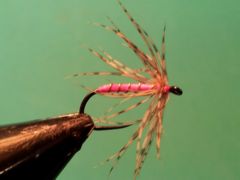
{{+1}}Partridge and pink spider{{-1}}
{{start}}
This is one of those flies that comes into its own on really bright days. The bright pink and the movement of the soft hackle in the water this fly often produce a hit. There is also the added benefit that they are so easy to tie. All river fly fishers should have a selection of English Spiders in their fly boxes.{{end}}
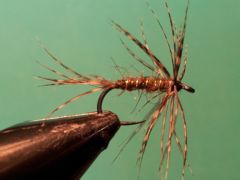
{{+1}}March brown spider{{-1}}
{{start}}
Where I fish, as the water warms up closer to lunch time your often find fish actively rising to March Brown Mayfly that are a mottled chocolate and dark grey in colour. I fish them in lakes to targeted rising fish, as a polaroiding fly and also as part of a loch style team and in river I find them a great swinging fly when fish are taking emergers just below the surface.{{end}}
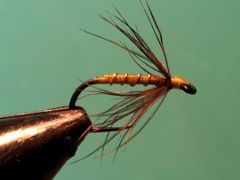
{{+1}}Greenwells spider{{-1}}
{{start}}
Many English flies have a spider version and Greenwells Glory is no exception. An interesting aspect of this fly is that the wing has been tied in beard style so as to camouflage the pint of the hook. The combination of the buggy shape, the movement of the soft hackle in the water often produce a hit. There is also the added benefit that they are so easy to tie. All river fly fishers should have a selection of English Spiders in their fly boxes.{{end}}
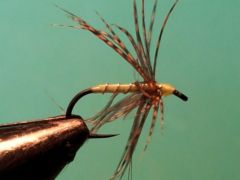
{{+1}}Partridge and chartreuse spider{{-1}}
{{start}}
Spiders are always a good option in rivers and whilst my "goto" spider is a partridge and orange the chartreuse version is always worth having on hand as an alternative. I don't know what the trigger but from time to time trout switch onto chartreuse coloured flies and if you don't have one in your kit your likely to fall behind or even worse, skunk the session.{{end}}
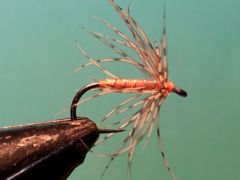
{{+1}}Partridge and orange spider{{-1}}
{{start}}
This is undoubtedly my "go to" spider. Fish all over the world seem to find orange a trigger colour and along with the buggy shape, the movement of the soft hackle in the water this fly often produce a hit. There is also the added benefit that they are so easy to tie. All river fly fishers should have a selection of English Spiders in their fly boxes.{{end}}

{{+1}}Red tag spider{{-1}}
{{start}}
This fly whilst being very different to a sparsely dressed north country spider has proven itself as a prolific fish catcher and has earned a place in my nymph fly box. I have no hesitation in tying it on either in combination with a traditional spider, a bead head nymph or heaven forbid a bead head version of a north country spider.{{end}}
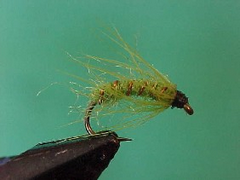
{{+1}}Fuzzy spiders – Chatto’s original{{-1}}
{{start}}
There is almost no limit to the combinations that you can come up with and these are the ones that I regularly fish and you may like to try. I don't know if fish pick them up as emerging insects but they do fish well when fish have emergers on the menu.{{end}}

{{+1}}Dark magic – Chatto original{{-1}}
{{start}}
As long as there is a flow in a river to work a fly then English Spiders are an option. Particularly if you want to target educated fish in clear slower water. They land softly and are suggestive little flies. The combination of the buggy shape, the movement of the soft hackle often produce a hit.{{end}}

{{+1}}English spiders{{-1}}
{{start}}
As long as there is a flow in a river to work a fly then English Spiders are an option. Particularly if you want to target educated fish in clear slower water. They land softly and are suggestive little flies. The combination of the buggy shape, the movement of the soft hackle often produce a hit.{{end}}
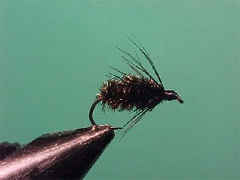
{{+1}}Black and peacock{{-1}}
{{start}}
Spider type flies like the Black and Peacock are very buggy and suggestive flies. Weather being used as a polaroiding fly, a static wet, one of the flies in a team of loch style flies, or a fly to cover rising fish spider type soft hackle flies may be taken as a snail, submerged beetle, drowned terrestrial, diving beetle or even a corixia. Alternatively the fish may just pick them up because of the movement of the soft hackle or the suggestive buggy nature of the overall shape.{{end}}













